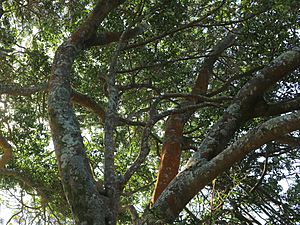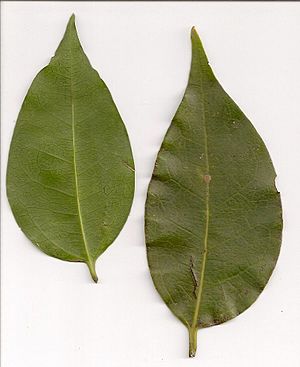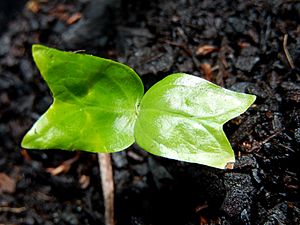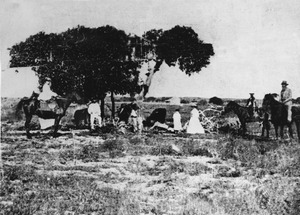Tripewood facts for kids
Quick facts for kids Investigator Tree |
|
|---|---|
 |
|
| tree at Bass Point, Australia | |
 |
|
| Celtis paniculata mature leaves | |
| Scientific classification | |
| Genus: |
Celtis
|
| Species: |
paniculata
|
| Synonyms | |
|
|
The Investigator Tree (scientific name: Celtis paniculata) is a special tree that grows in rainforests near the coast. You can find it in Australia, from Kiama in New South Wales all the way up to the Endeavour River in tropical Queensland. It also grows on Norfolk Island and other islands in places like eastern Malesia, Micronesia, and Polynesia. In Australia, people often call it the native celtis or investigator tree. While it loves coastal areas, it can also be found high up in the mountains, sometimes as high as 800 meters above sea level!
Contents
What the Investigator Tree Looks Like
This tree can grow very tall, sometimes up to 40 meters, which is like a 10-story building! Its trunk can be quite wide, about 90 centimeters across, though usually it's smaller. The trunk is mostly straight and a bit wider at the bottom. Its bark is thin, smooth, and grayish-brown, with small bumps in vertical lines.
Leaves of the Investigator Tree
The leaves of the Investigator Tree are shaped like an oval with a pointy tip. They grow one after another along the stem. They are smooth, not jagged, and about 6 to 10 centimeters long. The leaf stem is flat on top and about 6 to 10 millimeters long. Both sides of the leaf are a dull green color. If you look closely with a magnifying glass, you might see tiny clear spots in the leaves. The base of the leaf is often a bit uneven, meaning one side is longer than the other where it meets the stem.
You can see the leaf veins more clearly on the underside of the leaf. A special way to identify this tree is by a vein that runs along the edge of the leaf. It starts at the base and goes about a quarter to half the way up the leaf on both sides.
Flowers and Fruit
Small green flowers appear on the tree from December to January. They grow in small clusters in the leaf corners or in branched groups. The fruit is round to oval-shaped and turns black when it's ripe. It's about 8 to 10 millimeters long and has one seed inside. This seed has bumpy ridges. The fruit ripens between July and March.
Name and History
This plant was first described by a scientist in 1833. The name paniculata refers to its flowers, which grow in branched clusters. Later, in 1848, another scientist moved it into the Celtis group of trees. Other common names for this tree include Native Hackberry, Silky Keltis, Silky Celtis, Tripewood, and Whitewood.
The Original Investigator Tree
The most famous "Investigator Tree" was on Sweers Island in the Gulf of Carpentaria. It was named after Matthew Flinders' ship, the HMS Investigator. This island was an important stop for explorers in the 1800s. Many explorers carved their names or messages into this tree as they passed by.
How the Tree Grows from Seed
When planting the seeds, it's best not to remove the fruit's outer layer. It can take a while for the seeds to sprout, usually between 48 to 100 days. The first leaves that appear from the seed (called cotyledons) are large, about 30 by 25 millimeters, and have a tip divided into two pointy parts. The first few pairs of true leaves often have small teeth along their edges. Once the tree has about ten leaves, they become oval-shaped with a distinct pointy tip.
Animals and Uses
The Investigator Tree is an important food source for several types of butterflies, including the blue beak, common aeroplane, and tailed emperor butterflies. Many rainforest pigeons and other birds also enjoy eating its fruit. There's even a rare beetle called Menippus darcyi that feeds on the Investigator Tree. The wood from this tree is useful for general purposes and is quite dense.
Images for kids
See also
 In Spanish: Celtis paniculata para niños
In Spanish: Celtis paniculata para niños





